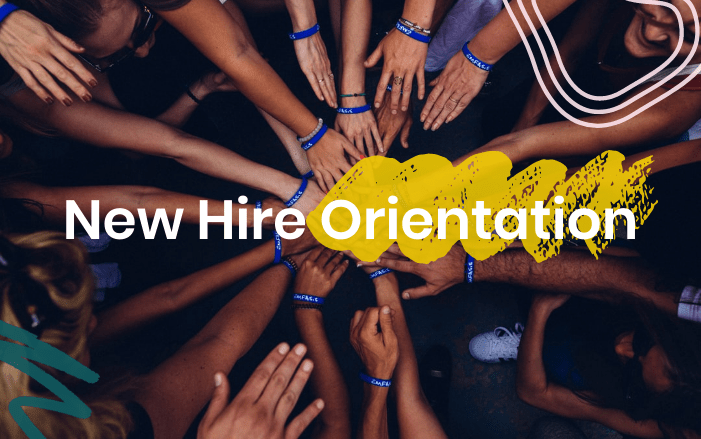6 Steps To Include in Your New Hire Orientation


Helping new hires understand and adapt to your culture and processes is essential, especially if you want them to thrive. And you definitely do want them to thrive – it can end up costing you between 50% – 150% of the employees’ salary to replace them. However, if you don’t have a standardized new hire orientation process, you’re probably missing things and letting people fall through the cracks. That can cost you tens of thousands of dollars a year. Therefore, it is vital to create a repeatable, consistent new hire orientation process. Here are six steps on how to do that:
1 Have the Desk Ready
This may seem insignificant, but it’s a huge relief to a new employee. Having the desk ready, with a welcome kit – maybe a pen, notepad, and coffee cup – will help the new hire feel welcome. It also helps your company look thoughtful and professional, which is a great first impression to make. So make sure the desk is not only available but clean and set up; ready to use. To make it particularly personal, have the person’s immediate supervisor leave a hand-written welcome note on the desk as well.
2 Do a Special First Day Lunch
On the first day, an employee is spending most of their time meeting the people they will work with. What better way to do this than have a team lunch, or a supervisor-employee lunch, on day one? People love to bond and socialize over food, plus it’s a great casual way to encourage people to get to know each other. It doesn’t have to be expensive – just make sure you take into account any dietary restrictions your new employee may have. Choose a restaurant that matches the culture of your business. A law firm might choose a more formal venue than a tech startup. Regardless, make sure it’s got great food, so you make a good impression.
3 Give a Tour – But Take Your Time
A tour is already a part of most companies’ employee orientation processes, but often these tours run too fast. You don’t want to simply walk around and point things out. “Here’s the training room, here’s the break room, these stairs go to…”. Instead, take your time – let the employee ask questions and actually meet and talk to people in each department. That makes it much easier for the new hire to remember where things are. Unfortunately, too often tours are a whirlwind that doesn’t help a new employee feel comfortable – they feel overwhelmed instead. By slowing it down and building in real conversation, you can make a tour helpful and memorable.
4 Assign a Buddy for the First Few Months
Having a go-to person to bounce around any questions – especially the “silly” ones – can be very helpful for a new employee. Assign each new hire a buddy in their department that can help them feel more comfortable. It gives them someone other than the manager to ask about both big and small questions. Be sure the buddy is someone who has the experience and really enjoys working for your company. The worst thing you can do is assign a new hire to work closely with a bored, disengaged employee for their first few months. Believe us, it happens. You might have an internal volunteer/application process for new hire buddies. That’s a great way to see who’s interested and evaluate them before you have a new employee work with them.
5 Find Ways to Have Fun
Creating games out of some of the new hire orientation process steps can help make things more interesting. Yes, paperwork has to be done, and there might be required training before they can dive into their role, but that doesn’t mean the process has to be boring. People learn well when playing games, so find a way to use games to transfer important information. This can include a prize for memorizing the company values and reciting them to a manager, or a small gift card if they manage to get 25 signatures from key employees on their first day. Fun creates engagement and helps bond employees to the company. Don’t overlook that.
6 Introduce Key Business Leaders
Whether you have only one new hire at a time or a whole team, arrange key leaders to be available to introduce themselves. This might mean one-on-one meetings or a period of team meetings where each manager introduces themselves and shares information about their role. The size of your company will dictate exactly which leaders are available but try to have at least the local head of the new hire’s department available, along with the highest-ranking local manager. You might also include team leaders and key HR personnel.
Great Orientation is Great for Business
Bonding new employees to your team from day one is vital. It’s a great way to set up a new hire for success, and it saves your business time and money. These six steps will help you craft your own new hire orientation program. The key is that it’s written down and consistently implemented. When it is, you’ll have great success with new hires!
Sign up for our newsletter!
Fine-tune your knowledge within on- and offboardings with our monthly newsletters.


